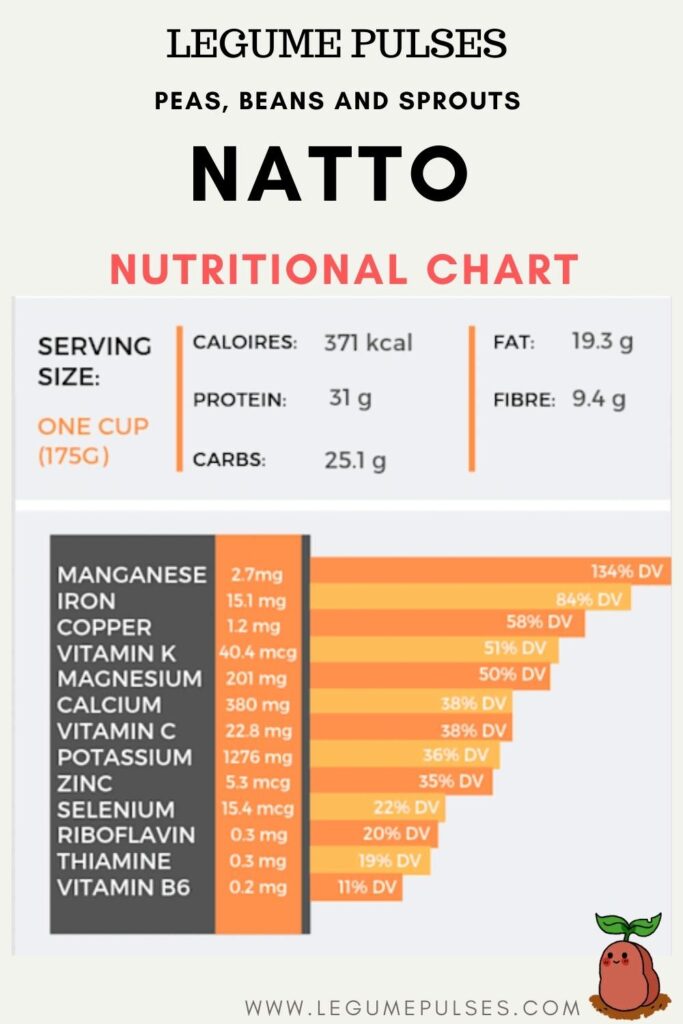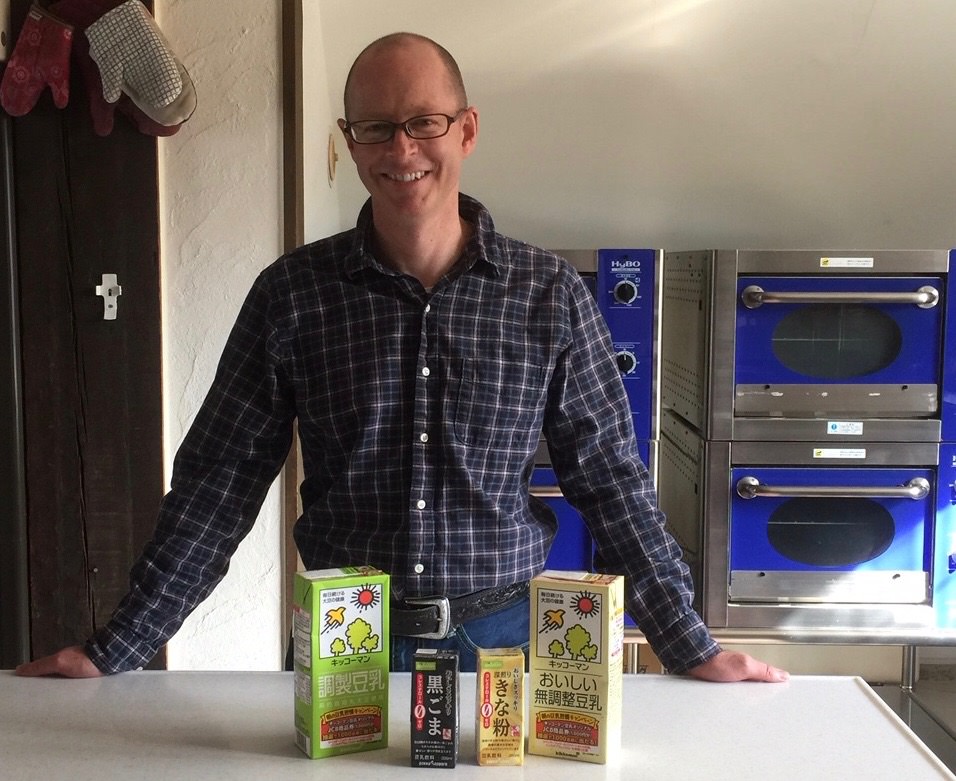Natto, you may know, is a stinky and sticky food from Japan. But it is also incredibly healthy. And in this article, you will learn the health benefits of Natto and I’ll answer the health concerns you may have before trying this tasty food.
Natto has to be one of the healthiest foods in Japan. It is rich in vitamins and protein. And many Japanese believe Natto supports cognitive brain function. But is Natto actually good for you? And should you eat Natto or take Nattokinase supplements?
Table Of Contents
- The nutritional value of Natto
- The potential health benefits of fresh Natto
- What are Nattokinase and the potential health benefits
- Health concerns
Is Natto Healthy? The Potential Benefits And Health Concerns
The Long History Of Eating Natto
Although the science behind Natto is at an early stage, it has been a part of the Japanese food culture for centuries. And the impressive health profiles of this population cannot be ignored.
Natto is typically consumed at breakfast and sold in individual servings. Japanese usually mix in a small packet of soy sauce and mustard. And usually, you have Natto with a bowl of rice. Here are a few simple tips on how the Japanese enjoy their Natto.
Why Is Natto Healthy?
Natto differs from other soy-based foods because the soy is fermented with the bacteria Bacillus Subtilis. Due to this fermentation process, Natto is rich in many nutrients. In particular:
- B vitamins
- Fiber
- Potassium
- Magnesium
Benefits Of Consuming Soybeans Or Soy-Based Foods
Some of the health benefits may include a reduced risk of heart disease [1] and breast cancer [2], as well as reducing the symptoms associated with menopause [3]. A recent fact sheet produced by the British Dietetics Association (2017) [1] concluded that: research on soy-based food is ongoing. But soya is nutritious, safe, and healthy. Potential health benefits include lowering cholesterol levels.
Additionally, soy products are low in saturated fat, high in protein, and can replace animal protein. And their inclusion has the potential to improve our overall health and help us move towards a more environmentally friendly and sustainable plant-based diet.
Nutritional Value Of Natto

Natto is full of powerful nutrients. These nutrients can have multiple beneficial effects on your overall health.
At first glance, you can see why Natto has been labeled by many as a ‘superfood’ due to the vast array of nutrients it provides. This is why people that consume Natto regularly may have associated health benefits.
The Main Health Benefits Of Natto Include:
- Packed with Probiotics
- Rich in Vitamin K
- Supports Bone Health
- Promotes Heart Health
- Nattokinase
Natto Is Packed With Probiotics
One of the main benefits of eating Natto is the abundance of probiotics. Bacillus subtilis, the bacteria added to create Natto during the fermentation process. This process synthesizes an enzyme called Nattokinase.
Nattokinase may help reduce blood clotting [4]. As it contains vitamin K and B vitamins [5].
Digestive Health
These probiotics support a healthy gut microbiome and are essential for digestive health and protect against inflammation [6]. Disruptions in this delicate gut microbiome can have adverse consequences on digestive health, including increased allergy sensitivity.
However, increasing the consumption of probiotics is known to have positive effects in treating:
- diarrhea
- ulcerative colitis
- irritable bowel syndrome
But it must be noted that more research in this area is needed.
Rich In Vitamin K
Natto contains 100 times more vitamin K than cheese. And considering the other health benefits of vitamin K, this alone is worth adding Natto into your diet.
Natto Contains Both K1 And K2 Vitamins
Vitamin K1
A unique property of Natto is that it contains both vitamin K1 and vitamin K2. K1 is found in leafy vegetables and contributes to about 90% of a typical Western dietary vitamin K intake.
K2 Vitamin
Vitamin K2 is not produced in plants but is made by various types of bacteria, including the bacteria required for the fermentation of soybeans to produce Natto, Bacillus Subtilis.
The vitamin plays an essential role in the reduction of artery calcification and also heart and bone health.
Benefits Of Vitamin K
Studies have shown that those with a higher vitamin K2 intake were 52% less likely to develop artery calcification. And 57% lower risk of dying from heart disease [7].
Natto is a good option for vegans and vegetarians. Since these fermented beans are one of the few plant-based sources of vitamin K1 and K2.
Eating Natto Supports Bone Health
Vitamin K is a component in maintaining bone mineral density. Which is particularly important for postmenopausal women and the aging population.
This is due to the deterioration in bone density associated with aging, resulting in an increased risk of osteoporosis in later years.
A study tracking the bone mineral density change in postmenopausal Japanese women discovered that those who consumed Natto regularly were less likely to experience bone density. And as such, it may help protect against osteoporosis [8].
Natto is also a source of calcium, manganese, zinc, and copper. These minerals play an essential role in maintaining bone health.
Promotes Heart Health
There is a large body of research on Natto’s contributions to heart health. And there is also evidence showing significant reductions in the risk of heart disease, artery calcification, and morbidity [9].
These heart benefits have been attributed to the probiotics, vitamin K content, fiber, and the enzyme, nattokinase that Natto provides. Natto also has 9g of fiber per cup. And along with the effects of vitamin K, fiber also contributes to lowering cholesterol and prevents arterial plaque build-up, reducing the risk of developing heart disease.
Additionally, the consumption of nattokinase has been linked with a reduction in blood pressure and stress on the heart [10].
A fiber-rich diet is also thought to promote satiety and weight management. Fiber increases gastric distension, slows the rate of gastric emptying, and impacts satiety hormone release [11].
Nattokinase
During the fermentation process, soybeans become easier to digest. This is due to the enzyme nattokinase. This enzyme is created during this fermentation process of Natto and is the only dietary source of nattokinase.
Nattokinase is used for a range of medicinal purposes that include the following:
- Heart disease
- High blood pressure
- High cholesterol
- Stroke
- Deep vein thrombosis
- Atherosclerosis
- Hemorrhoids
- Varicose veins
- Peripheral artery disease
Despite Natto, and consequently, nattokinase, being eaten for centuries to treat heart disease, more evidence is needed to support most of these uses.
Nattokinase is also extracted from Natto by pharmaceutical companies. To make the enzyme available in tablet form. And it is considered a safe, low-cost, and natural food supplement. It has shown evidence of:
- Circulatory system support through the reduction of blood pressure
- Thinning of blood and dissolving of blood clots [4]
- Decreases the risk of developing other diseases such as hypertension [12], stroke [13], Alzheimer’s disease [14], and atherosclerosis [15].
Although no adverse side effects have been observed from the consumption of nattokinase in various trials. And Nattokinase is sold as a dietary supplement in countries around the world. With ongoing research and trials, more information will be available to hopefully support the health claims of nattokinase.
Precautions & Considerations
Does Natto Have Estrogen?
While there is an ongoing debate around the potential adverse effects of soy. This is due to soy having a high concentration of isoflavones. (a type of plant-based estrogen).
However, there is no evidence to suggest that you should remove soy from your diet. In fact, the inclusion of soy products has several noted health benefits, as seen in Asian populations, where soy is a dietary staple.
Natto And Nattokinase May Thin Blood
Natto contains a specific K vitamin, MK-7, which can interfere with blood-thinning medication when consumed in high amounts.
Similarly, nattokinase may increase the chance of excessive bleeding during or after surgery. So, before surgery, please consult your doctor and surgeon if you are currently consuming Natto or taking a nattokinase supplement.
Little Scientific Research On The Effects Of Nattokinase Is Available.
There is currently not enough reliable information about the safety of taking nattokinase. If you are pregnant or breastfeeding, I recommend staying on the safe side and avoiding the use of natto and nattokinase supplements.
You should always consult your doctor before taking any dietary supplements or making dietary adjustments.
Currently, Nattokinase shows evidence of lowering blood pressure. Therefore if your blood pressure is already too low, the consumption of nattokinase may cause an issue.
Natto Contains Carbohydrates And Protein.
Despite Natto being packed full of health-promoting nutrients, it is also a calorie-dense food source as it contains 371kcal per cup. So it is good to be aware of your natto intake to avoid unintentional weight gain.
However, with appropriate calorie control and awareness, it is worth including Natto into your diet to experience the health benefits the superfood provides.
Natto has a high protein content (31g/cup) which is great news for vegans and vegetarians. Because getting enough protein in a plant-based diet can prove a challenge. So, including Natto in a vegetarian diet can be a valuable source of protein.
Additionally, for those looking to lose weight, protein increases satiety. Which in turn reduces the chance of snacking and over-consuming too many calories.
Is Natto Healthy?
The bottom line is that Natto is incredibly nutritious, and it tastes good too. Considering the proven benefits to the heart, bone, digestive, and circulatory health. It is worth acquiring a taste for these little fermented beans.
Natto consumption is safe for most of the population. However, if you are already taking blood-thinning medication. You should seek medical advice from your doctor before including it in your diet.
The health benefits of Natto and nattokinase far outweigh any risks. It makes for a healthy breakfast or snack. Simply add your favorite topping, such as raw egg and spring onions, if you want to eat it the traditional way.
For the best way to enjoy Natto for your breakfast, simply click the link for an in-house article.
Key References:
[1] British Dietetic Association (2017). Food Fact Sheet: Soya, food and health.
[3] Li, L., Lv, Y., Xu, L., & Zheng, Q. (2015). Quantitative efficacy of soy isoflavones on menopausal hot flashes. British Journal of Clinical Pharmacology, 79(4), 593-604.
[4] Kurosawa, Y., Nirengi, S., Homma, T., Esaki, K., Ohta, M., Clark, J. F., & Hamaoka, T. (2015). A single-dose of oral nattokinase potentiates thrombolysis and anti-coagulation profiles. Sci Rep, 5: 11601.
[5] Sato, T., Yamada, Y., Ohtani, Y., Mitsui, N., Murasawa, H., & Araki, S. (2001). Production of menaquinone (vitamin K2)-7 by Bacillus subtilis. J Biosci Bioeng, 91(1): 16-20.
[6] Plaza-Díaz, J., Ruiz-Ojeda, F. J., Vilchez-Padial, L. M., & Gil, A. (2017). Evidence of the Anti-Inflammatory Effects of Probiotics and Synbiotics in Intestinal Chronic Diseases. Nutrients, 9(6), 555.
[7] Geleijnse, J. M., Vermeer, C., Grobbee, D. E., Schurgers, L. J., Knapen, M. H., Van Der Meer, I. M., … & Witteman, J. C. (2004). Dietary intake of menaquinone is associated with a reduced risk of coronary heart disease: the Rotterdam Study. The Journal of nutrition, 134(11), 3100-3105.
[8] Ikeda, Y., Iki, M., Morita, A., Kajita, E., Kagamimori, S., Kagawa, Y., & Yoneshima, H. (2006). Intake of fermented soybeans, natto, is associated with reduced bone loss in postmenopausal women: Japanese Population-Based Osteoporosis (JPOS) Study. Journal of Nutrition, 136(5): 1323-8.
[9] Gast, G. C. M., de Roos, N. M., Sluijs, I., Bots, M. L., Beulens, J. W., Geleijnse, J. M., … & van der Schouw, Y. T. (2009). A high menaquinone intake reduces the incidence of coronary heart disease. Nutrition, Metabolism and Cardiovascular Diseases, 19(7), 504-510.
More Resources
[10] Jensen, G. S., Lenninger, M., Ero, M. P., & Benson, K. F. (2016). Consumption of nattokinase is associated with reduced blood pressure and von Willebrand factor, a cardiovascular risk marker: results from a randomized, double-blind, placebo-controlled, multicenter North American clinical trial. Integrated blood pressure control, 9, 95-104.
[11] Chambers, L., McCrickerd, K., & Yeomans, M. R. (2015). Optimising foods for satiety. Trends in Food Science & Technology, 41(2), 149-160.
[12] Fujita, M., Ohnishi, K., Takaoka, S., Ogasawara, K., Fukuyama, R., & Nakamuta, H. (2011). Antihypertensive effects of continuous oral administration of nattokinase and its fragments in spontaneously hypertensive rats. Biol Pharm Bull, 34(11):1696-701.
[13] Chang, Y. Y., Liu, J.S., Lai, S. L., Wu, H. S., & Lan, M. Y. (2008). Cerebellar haemorrhage provoked by the combined use of nattokinase and aspirin in a patient with cerebral microbleeds. Intern Med, 47(5): 467-9.
[14] Fadl, N. N., Ahmed, H. H., Booles, H. F., & Sayed, A. H. (2013). Serrapeptase and nattokinase intervention for relieving Alzheimer’s disease pathophysiology in a rat model. Hum Exp Toxicol, 32(7): 721-35.
[15] Dogné, J. M., et al. (2006) From the design to the clinical application of thromboxane modulators. Curr Pharm Des, 12(8): 903-23.
[16] Weng, Y., Yao, J., Sparks, S., & Wang, K. Y. (2017). Nattokinase: An Oral Antithrombotic Agent for the Prevention of Cardiovascular Disease. International journal of molecular sciences, 18(3), 523.







